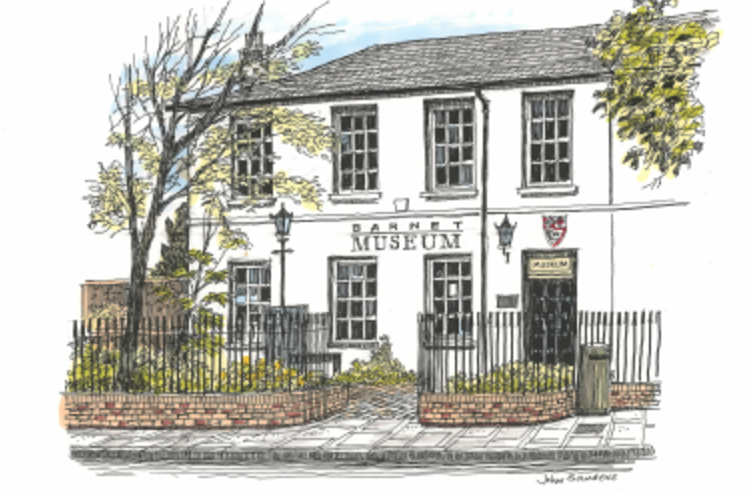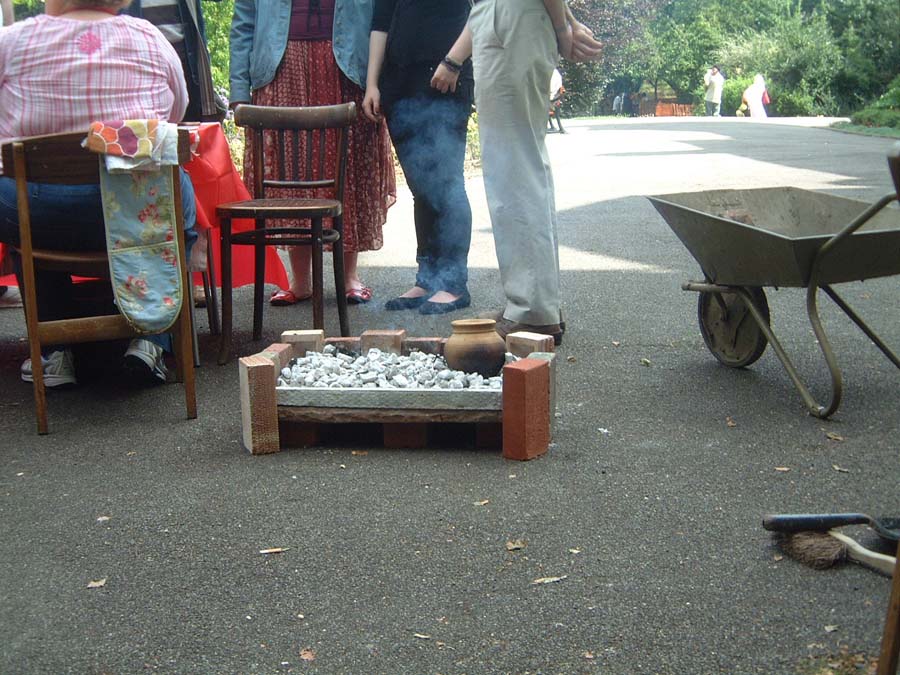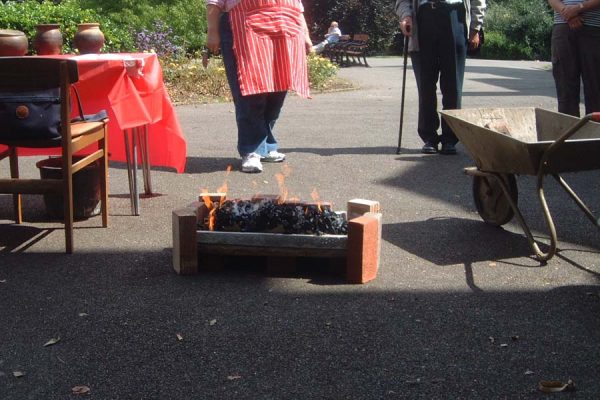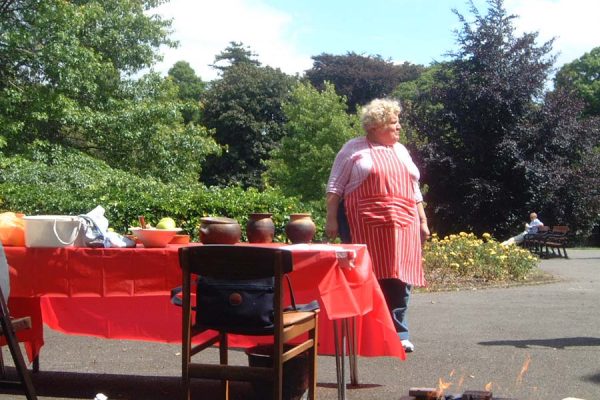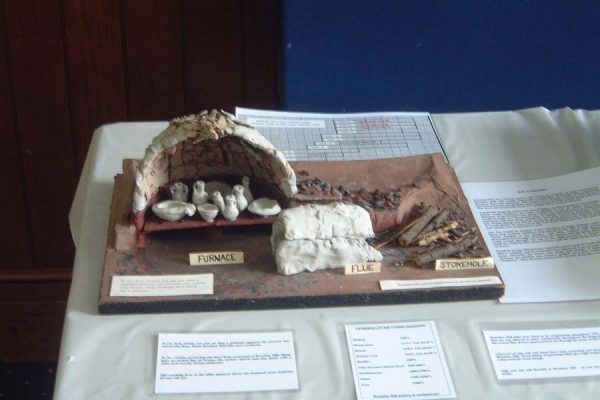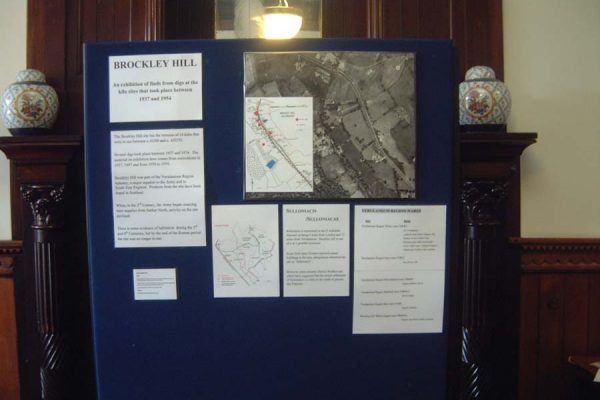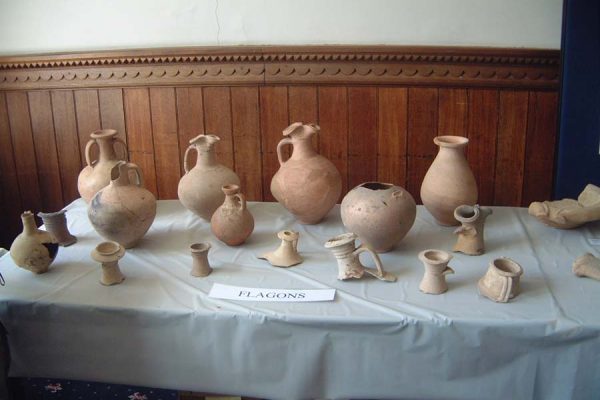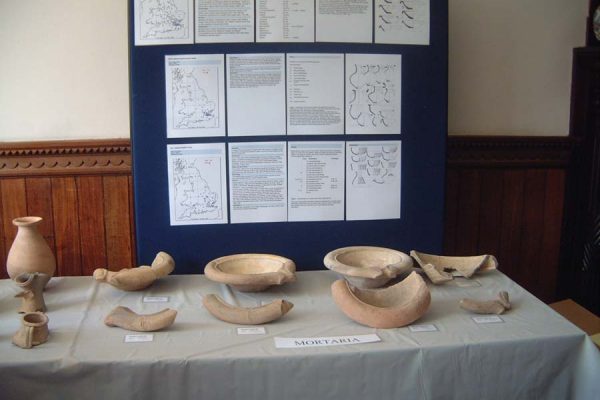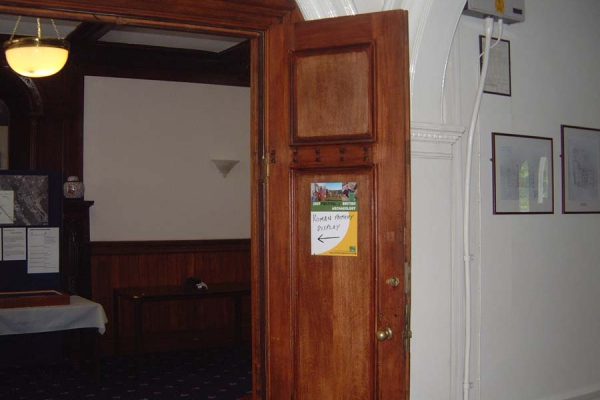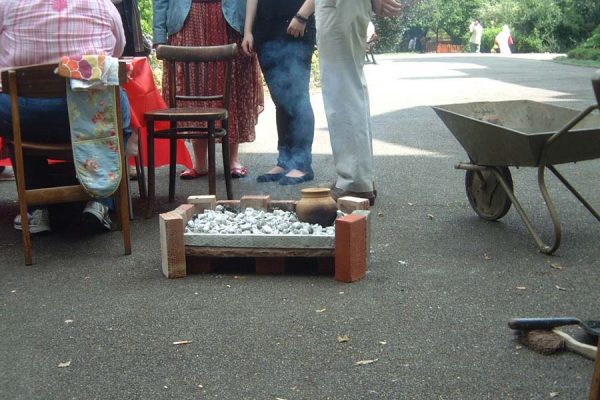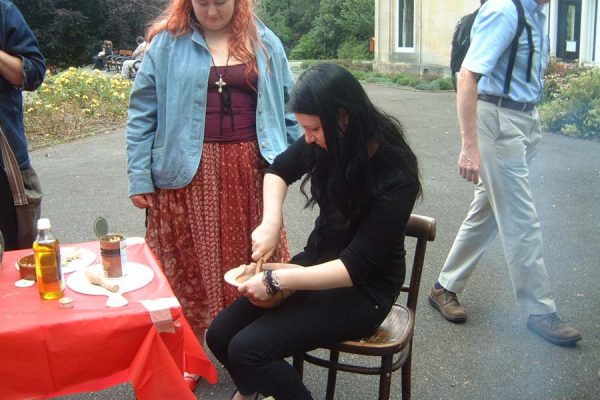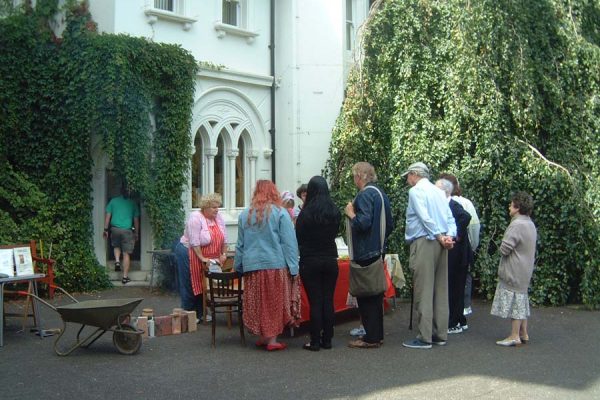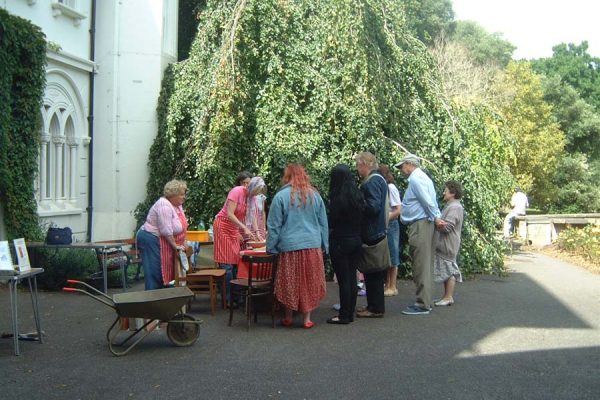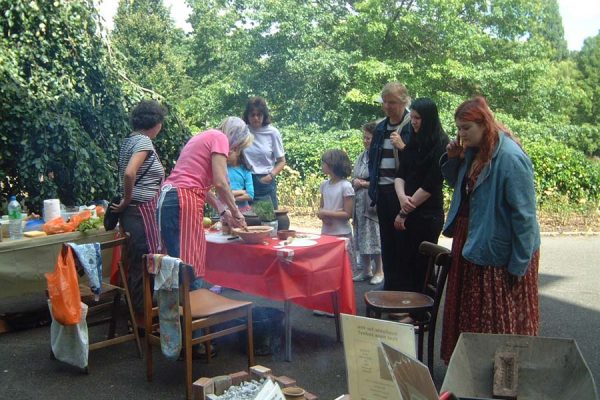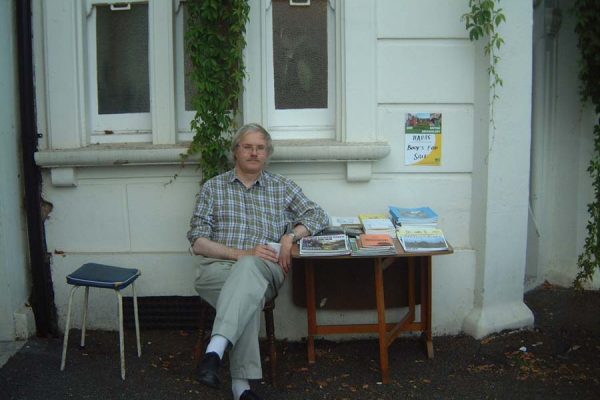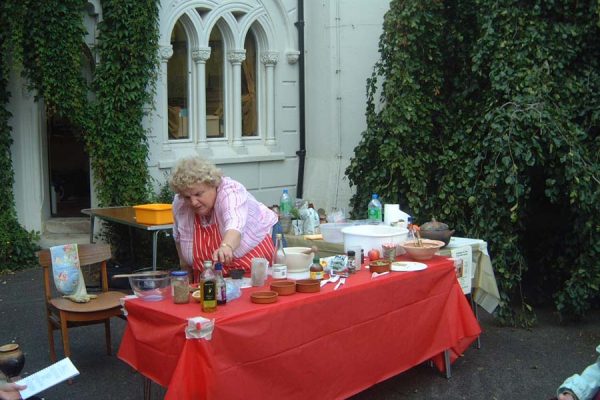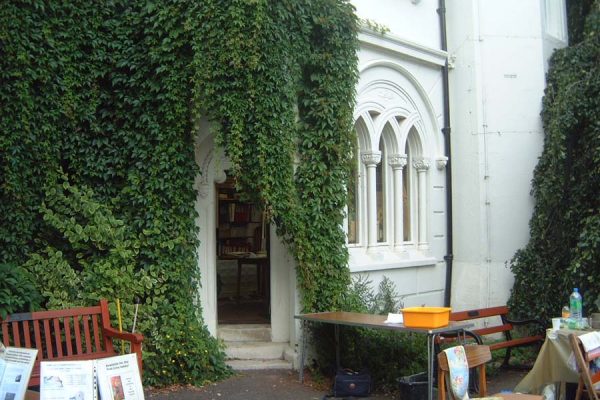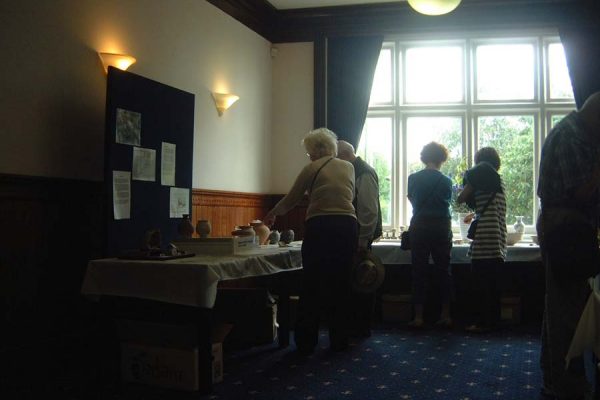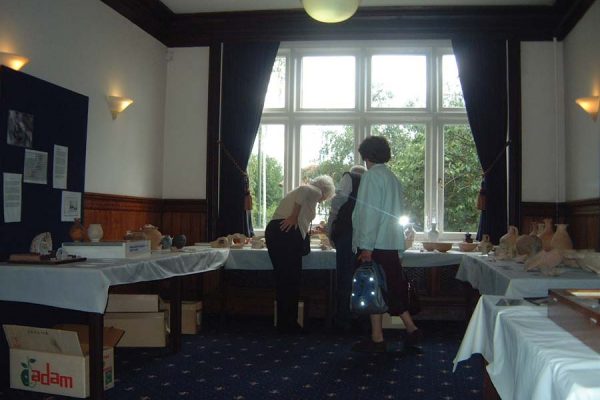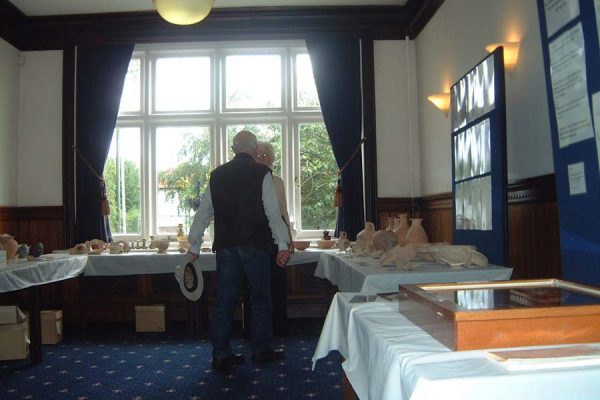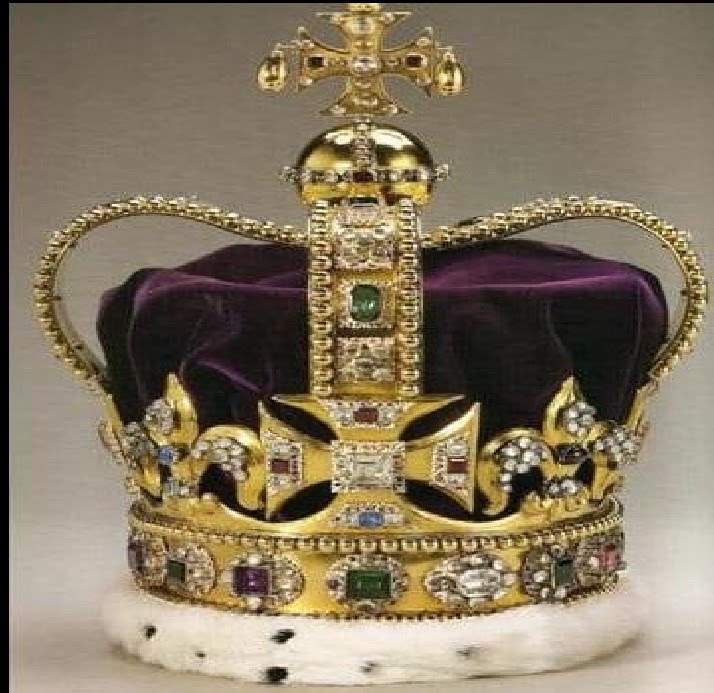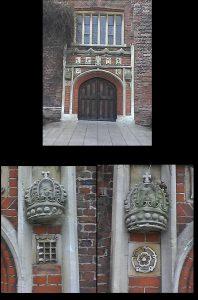Issue No 309 January 1997 Edited by Liz Holliday
A happy and peaceful New Year to all members, their families and friends
DIARY
Tuesday January 14
Archaeology under the river alluvium of south east England
by Dr Martin Bates
Tuesday 11 February
A History of Hertfordshire by Tony Rook
Meetings are held
8pm for 8.30pm Drawing Room at Avenue House, East End Road, Finchley, N.3
Visitors are always welcome
CHRISTMAS DINNER
Hearsay evidence suggests a good time was had by all – it must have been quite a session as the
full account is still being written! Full report next month!
MEMBERS NEWS
We are sorry to hear that Gill Baker is back in hospital. Good wishes go to her from us all.
GARDEN ARCHAEOLOGY
Report of November’s lecture by Muriel Large “A garden is a lovesome thing, Got wot” – a cliche which does little justice to the skill and dedication archaeologists devote to their search for early gardens hidden under neglected present ones. In his talk, Brian Dix, Head of Archaeology for Northamptonshire, provided an absorbing account of how layers of grass and topsoil in the gardens of stately homes can be peeled away to reveal how past ages gardened. The classic example was, of course, Hampton Court. Here, William III’s garden plans had originally reworked the area thoroughly, to produce a slope down to the Thames. This allowed the king to see the river from his first-floor apartments and loyal subjects on the towpath could be suitably impressed by views of the palace. The work not finished until after the king’s death, occupied a team of gardeners much larger than the group who re-created it. Among the odd discoveries was the fact that the garden was double-dug in the recommended fashion near to the palace, but further away the less deep the digging and by the towpath only the top four or five inches of topsoil had been cultivated. There was also the problem of the paths; originally of sand, they had to he swept by a hoard of gardeners as soon as the courtiers and Royal family went indoors, to obliterate footmarks and restore the garden’s pristine condition. Hardly on option these days, with 750,000 visitors each year! Sand was used in the restoration for the sake of its colour but it was blended with clay for ease of maintenance.
A magnetometer and sensing equipment was used to identify the original layout, underneath the overgrown yew trees, which had been in-filled with shrubs and flowers by the Victorians. Mercifully, the garden was fully documented as originally laid out, although there was the perennial restoration problem – to which period should the reconstruction relate?
With the changes in levels, flights of steps had to be introduced where traces of the original steps were found and 33,000 box seedlings were planted to outline the overall pattern. The crowning glory was the reconstruction of Queen Mary’s Bower, an impressive 120 foot tunnel arbour or pergola, decorated this time with the arms of Queen Elizabeth II. It may be that in the future, as the planting grows, the fine woodwork will disappear under the greenery. At present, the arbour is a remarkable piece of work itself.
An unusual role for archaeologists, to construct rather than uncover and dissect, but they were entrusted to lay out the pattern and oversee the planting.Mr. Dix also described similar, although less extensive, work carried out at a chateau in Burgundy and a Jacobean house in Northamptonshire. Those of us digging our suburban gardens, unearthing broken bricks and pieces of tile, may sometimes feel that we are engaged in archaeology rather than horticulture! However, we can at least draw comfort from the examples that have resulted in new life for long-vanished gardens.
The winter edition of CADW’s journal “Heritage in Wales” includes a report of the recent discovery of a secret garden at Haverfordwest Priory. A copy of the journal will be deposited in the HADAS library.
MYSTERIES OF ANCIENT CHINA: new discoveries from the early dynasties
This exciting exhibition is at the British Museum until 5 January. It is the first great loan exhibition of antiquities from China to be seen in London for twenty years, bringing together recent startling archaeological discoveries which radically change perceptions of China’s early history. Spanning the period 4500BC to AD 200, the exhibition explores ancient Chinese beliefs about life and death. The exhibits, which come from several distinct regions of China, show that images of men and spirits inspired some of the greatest masterpieces of ancient Chinese art. Figures with large projecting eyes, cranes with towering antlers, spirits with feathered wings and suits of jade are strange and beautiful creations, many of them quite literally, mysteries.
CBA Conference: ROMAN LONDON: RECENT ARCHAEOLOGICAL RESULTS FROM THE CITY Report by Peter Pickering
Several HADAS members attended this conference on 16 November. Several others were unable to get in – it was a sell-out_
The speakers, almost all from MoLAS, varied, but were usually both good and interesting. Many new ideas – new at least to me – were put forward and I think members may be interested to learn about some of them.
Nick Bateman quoted Vitruvius, the Latin writer on architecture, who divided public buildings into three categories: those for defence (walls); those for religion (temples) and those for convenience (baths, forums, amphitheatre and the like). The absence of state temples in Roman London has often been remarked, bit an early and perhaps short-lived one has been found west of the Huggin Hill bath complex, with an unexplained building between them. The Basilica building was, despite the reputation of Roman builders, a shoddy piece of work, which had required a lot of repair during its life.
Jane Sidell reported on the environmental evidence from the East London Roman Cemetery. Work on the biological material buried with people in graves has had remarkable results_ Many graves (especially cremation rather than inhumation burials) contained food, but one had two separate deposits – one with half a piglet and a goose, and one with the other half of the piglet and a dressed chicken. Graves in different parts of the cemetery contained different types of pulses. There were pits that contained animals but no human bodies – one with a horse, a dog and a red deer, close together in a circle, and another with lots of frogs and a heron. Perhaps there had been this pit with water in it; frogs had colonised it and then a heron saw the opportunity of a meal, swooped in and was unable to spread its wings so as to fly out; but if so, why then was there nothing else in the pit? Was there some strange ritual? Jane Sidell also illustrated two imports into Roman London – one of stone pine cones (perhaps for making pesto sauce from the kernels) and the other of cannabis (for rope or medicinal purposes).
David Sankey attempted to convince us that he had identified a late Roman cathedral, from a ground-plan very like that of the early St. Theela’s cathedral in Milan. Those unconvinced could believe it was a large warehouse, but even that, he argued, was evidence that London was much more important in the very late period than common opinion would have it.
Bruce Watson talked about the notorious Dark Earth. Pollen analysis has shown that this is not the remains of Late Roman gardens, and that there were not trees about. His theory was that it was evidence simply of waste land.
Finally, Professor Martin Millen from Durham talked about the status of Roman London and warned us against reading the present into Roman administrative structures. A study of the so-called provincial capitals from the western part of the Roman Empire demonstrated their great differences. He even thought that the statement of the geographer Ptolemy, that London was a town of the Cantii and therefore subordinate to Canterbury, might be legally right (it gets some support from an inscribed tablet recording an inquiry into the ownership of a wood); he thought London was something of a “gold-rush” town, settled by Roman citizens who were traders from Gaul. Although the procurator of the province would he resident in London, and it was the hub of the road network, it was, he argued, not really the governor’s capital. The governor would often be out and about with the troops, and the centre of Britain for the purpose of the state religion perhaps always remained in Colchester.
CHURCH FARMHOUSE MUSEUM
The current exhibition features Construction Toys, dating from the middle of the 19th century to the present day. You will find early wooden building blocks, kits in all types of materials made by such firms as Sarnia, Lotts Bricks, Minibrix and Bayko. There is a wonderful crane made from Meccano specially for this exhibition. Lego UK generously lent two huge drums of bricks so that pupils from Sunnyhill JMI could make models for the exhibition. The whole school took part in a Lego day, and the results are on show.
Creating its own tradition, once again the dining room at Church Farmhouse is decorated as it would have been for a Victorian Christmas, with baubles, bangles, holly and ivy. The room looks as if the family have just got up from the dining table. Decorations stay up until Twelfth Night.
The Museum will be closed on Christmas Day and Boxing Day and also on 1 January. Construction Toys will be on show until 2 February.
NEWS FROM OUR NEIGHBOURS
Barnet & District Local History Society meet in the Wyburn Room, Wesley Hall, Stapylton Road, Barnet. At 2.45pm on Monday 6 January June and Jack Alcock will present History of the River Thames.
Enfield Archaeological Society welcome visitors to their meetings in the Jubilee Hall, junction of Chase Side and Parsonage Lane. Tea is served at 7.30; meetings start at 8pm. On Friday 17 January Ian Jones will be talking about Africa Proconsularis: Carthage and Rome in Tunisia.
The Wembley History Society will he learning about Science in 1824 and Today from Leslie Williams at 7.30pm on Friday 17 January at their meeting in the Church Hall, adjoining St.Andrew’s Church, Church Lane, Kingsbury.
The Finchley Society
meets on Thursdays at 7.45pm in the Drawing Room at Avenue House, East End Road, N3. On
Thursday 30 January Joanna Corden will be revealing Finchley from the archives
Pinner Local History Society will be holding a local history day on Middlesex Manors – then and now on Saturday 22 February from 10.00am – 4.30pm at the Winston Churchill Hall, Ruislip. Tickets cost £4. Contact Mrs Beryl Newton on 0181-866 3372.
This spring, Enfield Preservation Society will publish Fighting for the Future: the story of the society 1936-1996. There book includes 229 photographs and prints, many never published before. The book will cost £13.50 (plus £3 p&p) if you place an order with payment by 28 February. Contact Mrs Irene Smith, 107 Parsonage Lane, Enfield, Middx., EN2 OAB
EARLY BARNET AND ITS BOUNDARIES by Pamela Taylor
The early medieval history of Barnet – the manor and parish, not the London Borough – has always been very obscure, and until recently we had no information before the mid-twelfth century. The earliest part of the fabric of St Mary East Barnet has been dated c.1140, and this chimes well with the earliest known written reference, which comes in a papal bull from Adrian IV to St Albans Abbey granted in February 1156/7. (It says 1156 but is probably operating on the Julian rather than the Gregorian calendar). Bulls are known by their opening word(s), so this one, which begins with a phrase about the incomprehensible and ineffable divine majesty, is known as incomprehensible. It’s not as had as that: in fact it’s a detailed confirmation of the abbey’s privileges, (Adrian was a local St Albans boy made extremely good) and, unlike the abbey’s earlier bulls, includes a list of its churches, among them Barnet. This was at East rather than Chipping Barnet because the latter only developed after the building of the new main road to the north in the late eleventh or twelfth century, and especially after the abbots of S Albans obtained a charter to hold a market there in 1199. St Albans garnered charters of privileges from kings as well as popes, and the earliest known royal charter which mentions Barnet, again in a comprehensive list of the abbey’s properties, was granted by Henry II; it is undated (the English chancery didn’t yet regularly follow the excellent papal example), but has been assigned from its witness list to 1176. The local entry is particularly interesting because it reads “Barnet cum boscis de Scthawe, et Borham, et Huzeheog”. The woods of Southaw and Osidge were always later included within Barnet, but by the time we have regular records Borehamwood was part of the abbey’s manor of Aldenham Barnet’s boundaries with other St Albans manors were therefore still not immutable in the later 12th century, but from other references it has long been known that the separation from Friern Barnet (and with it the boundary between Herfordshire and Middlesex) was by then firmly in place. The bishop of London reclaimed what became known as Friern from a tenant in 1187 prior to granting it to the Hospitallers in 1199 (it was from them, via the French for Brothers, that it got its name).
None of the Barnets is named in Domesday Book, and until recently the only supposedly pre-12th century reference was a comment in the 14th century version of the St Albans house chronicle, the Gesta Abbatum, that William the Conqueror had punished its abbot’s rebellion by removin’ “all the abbey’s lands between Barnet and London stone (which is still to be found within the City, in Cannon Street). There were always considerable reservations about the source, but in the absence of other information it was accorded a degree of plausibility – and it would neatly have explained the separation of Friern. Now, however, the discovery in Brussels by a Cambridge don, Simon Keynes, of a 17th century copy of an otherwise lost 12th century St Albans cartulary, means that the story is exposed as a total myth, and that our knowledge is extended backwards to 1005.
All the deeds in the cartulary were in fact known from 13th century and later Latin copies, but the 12th century exemplar also contained some Old English versions and, more importantly, detailed boundary decriptions_ From these we now know not only that King Athelred’s grant to the abbey in 1005 of Waetlingcaster equates to Kingsbury in St Albans, but that the unnamed area of attached woodland which was part of the same grant equates to Barnet. The boundary description for Barnet is not totally identifiable, but it seems to follow the normal pattern of a circuit clockwise round from 12. The central part of the northern, and all of the eastern, side are unrecognisable, but from the point where the circuit reaches hyttes stigele, or Betstile, the rest is reasonably plain sailing. Betstile, the older name for New Southgate, is at the southern corner of the boundary between East and Friern Barnet. Better still, the next stretch north-westwards is described as “along the bishop’s boundary”, and it’s hard to imagine that this could be anyone other than the bishop of London. The boundary was copied twice, with minor variations (and it’s worth remembering that the
17th century copyist was floundering too); what follows is an amalgamated version, with the symbols my processor can’t cope with modernised to th, and some added semi-colons.
This synt thes wealdes gemaere into thære ealden byrig. Ærest of hæwenes hlæwe; andlang enefeldinga gemære; on scirburnan, of scirburnan; to aetheleof hæcce. Of tham hæcce; to æscbyrthes heale, of tham heale; andlang eadulfingtuninga gemære; to r (or s)eodes gate, of tham geate, on byttes stigele, of byttes stigele; andlang thaes biscopes gemære; on wakeling mor, of tham more; on aggangeat, of tham geate; on thane steort; æt bræneten, andlang bræneoten; a be tham geondran stæthe; on thæne sihter, of tham sihtre; æt tatehrycges ænde; andlang heanduninga gemære; on grendeles gat, of grendeles gate; andlang scenleainga gemære; on ruge beorc lege, of beorc lege; on hæthlege, of hæthlege; a be wyrtruman.
The structure of this isn’t at all difficult, and from Betstile round to Hadley you can plot it on the map. You either walk on…of (onitaff or up tolaway from), or be, (by), each marker, or you walk andlang, (along) a longer stretch. Taking the individual names in turn: a hlæwe is a mound or barrow, and it’s very tempting to identify this one with the possibly Iron Age earthworks in Hadley Wood; along the Enfield boundary is readily comprehensible, although the boundary itself may later have shifted a little; the shire stream is presumably Pymmes Brook, whether you go along or across it is unclear, though perhaps more probably along, not least because “shire” implies it was used as a boundary – but no one has been able to make any sense of this bit on a map; Athelof s hatch (gate) and Ashbirt’s hale (corner) are lost, but conspicuous turning points along a boundary were usually marked, and the latter could therefore be the sharp north-eastern corner; along the Edulfington boundary is explained by another major discovery from the cartulary, that Edulfington is what was later known as Edmonton; r/seodes gate cannot, according to the experts, transmute to Southgate; Betstile and the bishop’s boundary were dealt with above; wakeling mor must have been swampy, and therefore presumably in a dip; Agate is more or less at the junction of Northumberland Road and the A1000; steort means a spit of land; to and along the Brent; cross to the further hank (geondran stæthe); along the ditch; at Totteridge’s end; along the Hendon boundary; Grendels Gate is the older name for Barnet Gate, along the Shenley boundary; ruge beorc lege (rough birch clearing) is Rowley; on/off Hadley gives us a new early reference to the place-name, but the fact that it’s not given as “along the Hadley boundary”, and the general difficulty of plotting the northern and eastern side of the circuit, suggests something less than an established settlement; by the crop clearing.
So there, for the moment, we have it. In 1005 King Æthelred granted the abbey land which had previously been his – Kingsbury and its attached wood at Barnet, and by then the bishop of London was already holding Friern. It’s a lot better than our previous knowledge, but of course raises endless new questions. For anyone who wants to take it further, references and more detailed information are available at the Local Studies and Archives

